|
Acotylean
C Body elongate oval
with two nuchal tentacles. Translucent with a beige tint and scattered
white spots, sometimes indistinct. However, in the field usually bright
green, probably resulting from ingested plant matter ramified throughout
the body in the digestive system. A narrow marginal band lacks the green
color, when present. Two small, widely-spaced, red-brown spots on the
midline, the first slightly anterior to the animal's center. "The first
two photos are of a large, intensely colored animal and were taken the
same day it was collected. The worm in third photo was probably somewhat
less intensely colored originally but may have faded a bit since the
shot was taken one day after collection. In contrast, animals photographed
seven days after collection are completely brown. The species is also
peculiar in that young animals have a patch of cerebral eyes between
the tentacles which they loose as they mature. The bottom (5th) photo
is of a very small worm with prominent cerebral eyes ... and above it
is a photo of one that had been held for seven days before it was photographed--a
medium sized worm that still shows a faint trace of the cerebral eyes." |
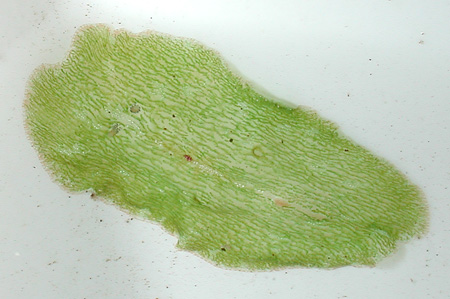 photographed on day collected |
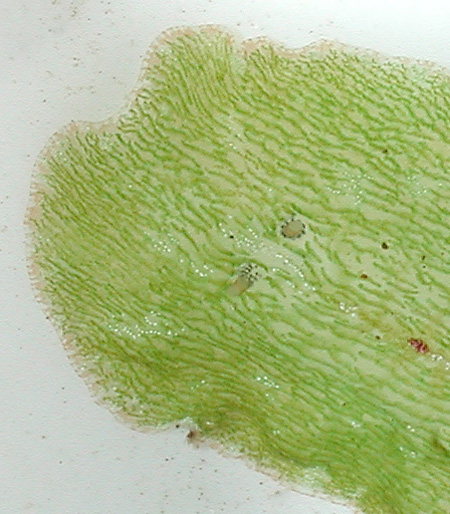 photographed on day collected |
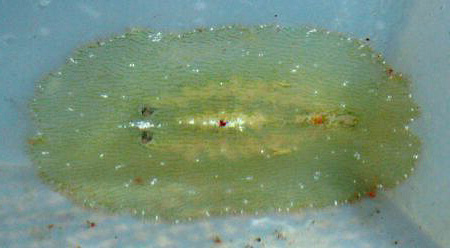 photographed one day after collection |
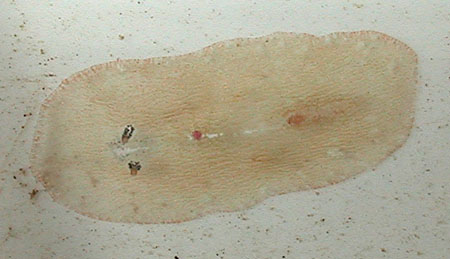 photographed 7 days after collection |
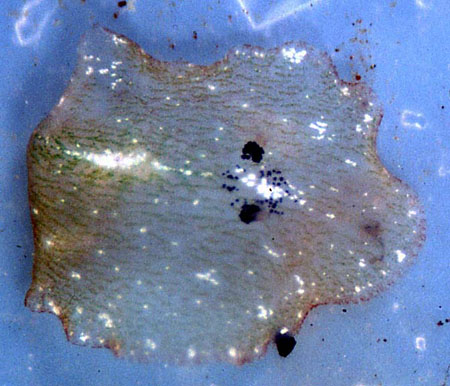 juvenile, showing eyes between the tentacles |